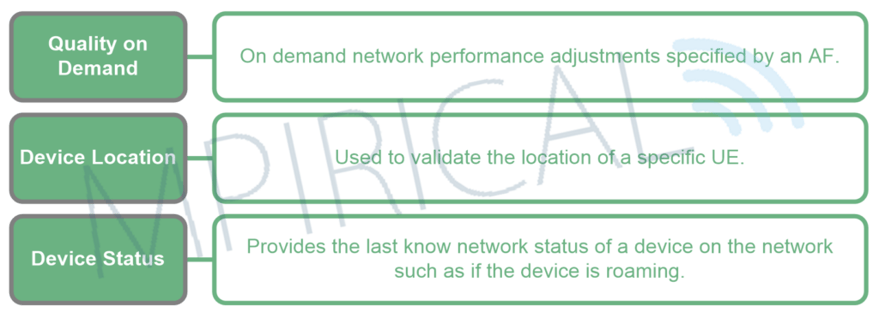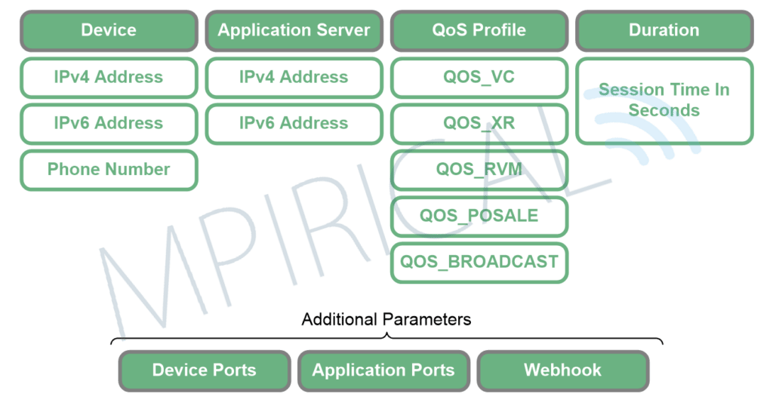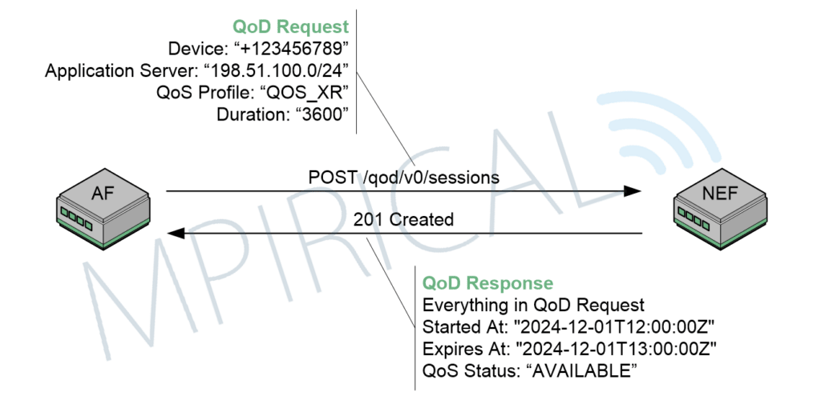
Network APIs: Exposing 5G’s Network Capabilities
We’ve already seen many discussions surrounding how expensive 5G is to implement, which has led to a diversification in revenue streams for MNOs (Mobile Network Operators). One of the most heavily discussed revenue streams currently is CPaaS (Communications Platform as a Service), which is set to expose 5G network capabilities through APIs (Application Programming Interfaces), also known as Network APIs. Essentially, in the context of 5G, Network APIs allow third-party developers, enterprises, and service providers to access advanced network features such as network slice management, QoS (Quality of Service) management, edge computing, and data analytics.

These APIs will most likely be accessible via the NEF (Network Exposure Function). So, we’ve identified the justifications for Network APIs, but what APIs are available?
Outline of Network API Types
Figure 2 outlines the various domains of Network APIs, each serving specific functions to enhance service exposure and network integration.

The NEF enables external applications to access 5G network capabilities securely and offers its own set of 3GPP (3rd Generation Partnership Program) standardised APIs. CAPIF(Common API Framework)standardises API interactions, ensuring consistency across network services and facilitating the discovery of APIs. CAMARA, a collaborative initiative, simplifies APIs so developers are not required to understand the inner workings of the 5G Core. Some MNOs have gone away and started developing their CAMARA-compliant set of APIs, such as T-Mobile’s DevEdge.
Outlining all of the APIs available is more of a course than a blog, so Figure 3 highlights a subset of available APIs.

This year, T-Mobile and Deutsche Telekom launched a Telecommunication Network API Challenge focused on the QoD (Quality on Demand) API from T-Mobile’s DevEdge platform. This was based upon real-world use cases and enhanced essential applications across industries such as healthcare and industrial safety. With this in mind, lets dive into how the QoD really works:
Diving into Quality on Demand
The QoD (Quality of Demand) API allows developers and capability consumers to request a change in latency, reduce jitter, or improve throughput for specific PDU (Protocol Data Unit) sessions. The developer or API consumer will have a pre-defined set of QoS (Quality of Service) profiles from which they can choose, as shown within Figure 4, which highlights the QoS profiles available via the DevEdge QoD API. Each QoS Profile is used to support an identified market vertical: VC (Video Calling), XR (eXtended Reality), RVM (Remote Vehicle Manoeuvring), POSALE (Point Of Sale), and Broadcasting. Each QoS profile will specify if it is GBR (Guaranteed Bit Rate) or Non-GBR, its default priority level (the lower, the better), its packet delay budget in milliseconds, and the packet error rate.

As shown within Figure 5, the AF (Application Function) will send a QoD Request containing the device address, the application server address, one of the predefined QoS Profiles, and the requested session duration change. Additional information not included in the diagram will be the device/application ports and a callback URL (Uniform Resource Locator).

If accepted, a 201 Created message will be returned containing everything within the QoD Request. This confirms that all of the request values have been approved. In addition, the start time, end time, and QoS status are included in the response.
Conclusion
In conclusion, implementing 5G has forced Mobile Network Operators to diversify their revenue streams, with Network APIs playing a critical role in this transformation. By enabling developers, enterprises, and service providers to access advanced network functionalities such as QoS management, edge computing, and network slice management, these APIs facilitate innovation across various industries. The adoption of frameworks like NEF, CAPIF, and CAMARA ensures standardization and simplifies the integration of these capabilities. The Quality on Demand API exemplifies the potential of these developments, enabling tailored QoS adjustments that cater to specific use cases, from video calling to industrial safety. If you would like to learn more, feel free to check out our Network APIs course.
